Discover everything you need to know about best crafting guide in the last Epoch Season 2, including its unique mechanics.
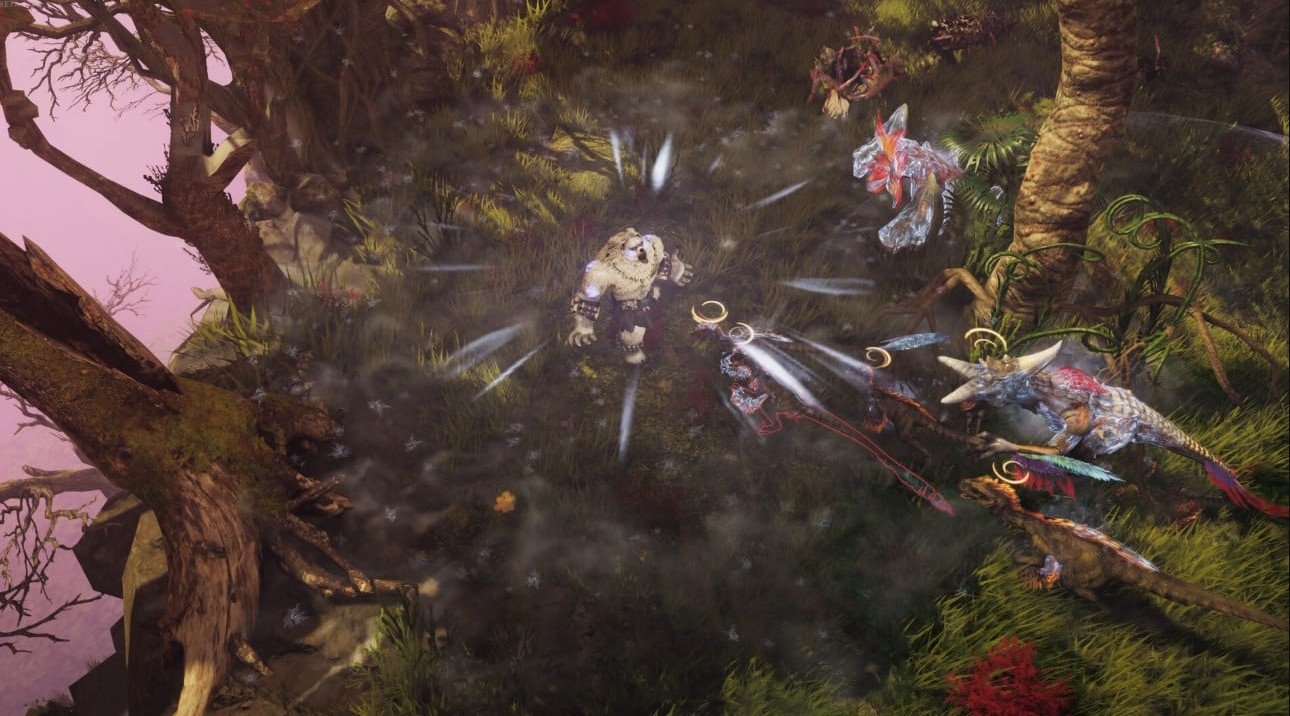
Crafting in Last Epoch Season 2 allows players to increase and personalize their gear. This process is useful to optimize your character’s build and progress through the endgame content. The primary components of this system include Affix Shards, Forging Potential, Glyphs, and Runes. Runes are powerful items that can significantly alter an item’s properties. Glyphs are special items that affect the crafting process. Affix Shards represent specific affixes and are used to add or upgrade affixes on items.
Each item has a limited amount of FP, indicating how many times it can be crafted. Plan your crafting actions carefully to avoid depleting it prematurely because the FP is limited. Rune of Removal can help target specific affixes for extraction. Use the Rune of Ascendance to convert common items into unique or set items. In this guide, we’ll discuss how to craft in Last Epoch Season 2, along with useful tips and tricks for crafting an item.
Crafting System in Last Epoch Season 2
Like in any ARPG, picking up loot and refining it into the gear of your dreams is a major cornerstone of Last Epoch’s gameplay. Crafting is one of Last Epoch’s strongest and most well-developed features. Understanding your crafting capabilities can completely change the way you progress through the game. This can ultimately make you stronger and faster. Season 2 brings some major changes in crafting mechanics, so you need to learn them. The advanced crafting includes Idol Enchanting, regorging process, item shattering, and Attribute Swapping. Item Shattering allows you to shatter set items to extract their unique affixes.
You can easily break them down to reuse them, instead of stashing them. Reforging allows you to rework Last Epoch set items into alternate versions with separate affixes. Use the Thaumaturgy Device in the Rune Prison Complex to create Experimental affixes. If the item already has two prefixes and no Experimental affix, then you can choose to swap out one prefix on a belt, glove, or boot item. You need 3 runes to craft items in the last Epoch Season 2. Rune of Havoc, Rune of Redemption, and Rune of Weaving are the new runes added in this Season.
Crafting Background
Gear is the single most important stat provider to your build. You will have a passive skill tree, and every skill has its own skill tree. However, your gear will provide most of the straight stats that your passes and skills need to function as a build. Whenever you feel like your build is weak or you’re dying too often, it’s almost always a good idea to start by looking at your gear first. You need to see which stats your gear is providing you. Identifying the problems within your gear is crucial. If you’re dying too fast and you want to increase your defenses, maybe you need to look at what resistances you have and how much armor, dodge, or ward your gear is giving you.
Whatever the question is that you have about your build, your gear can usually give you the answer. The passive skill tree and individual skill trees are very important. They are what I consider to be the foundation that your gear builds upon. If you build on top of a rocky foundation, the entire thing will collapse. If you ever need help determining which stash to look for on your gear, all you have to do is look at the tags on whatever skills you want to use. For defenses, there are generally three main rules I always follow when making a new character.
Max your resistances, increase your health and ward pool, and increase your armor or dodge rating. There are more defensive stats and strategies you’ll need to learn about once you get into Empowered. However, for the most part, these three rules will take you pretty far. Crafting is not deterministic, and the outcome of your gear is not guaranteed. But you can heavily influence it by using the crafting system to its full potential. So, the number one rule to starting your journey in Last Epoch is to craft soon and craft often.
Basics of Crafting in Last Epoch
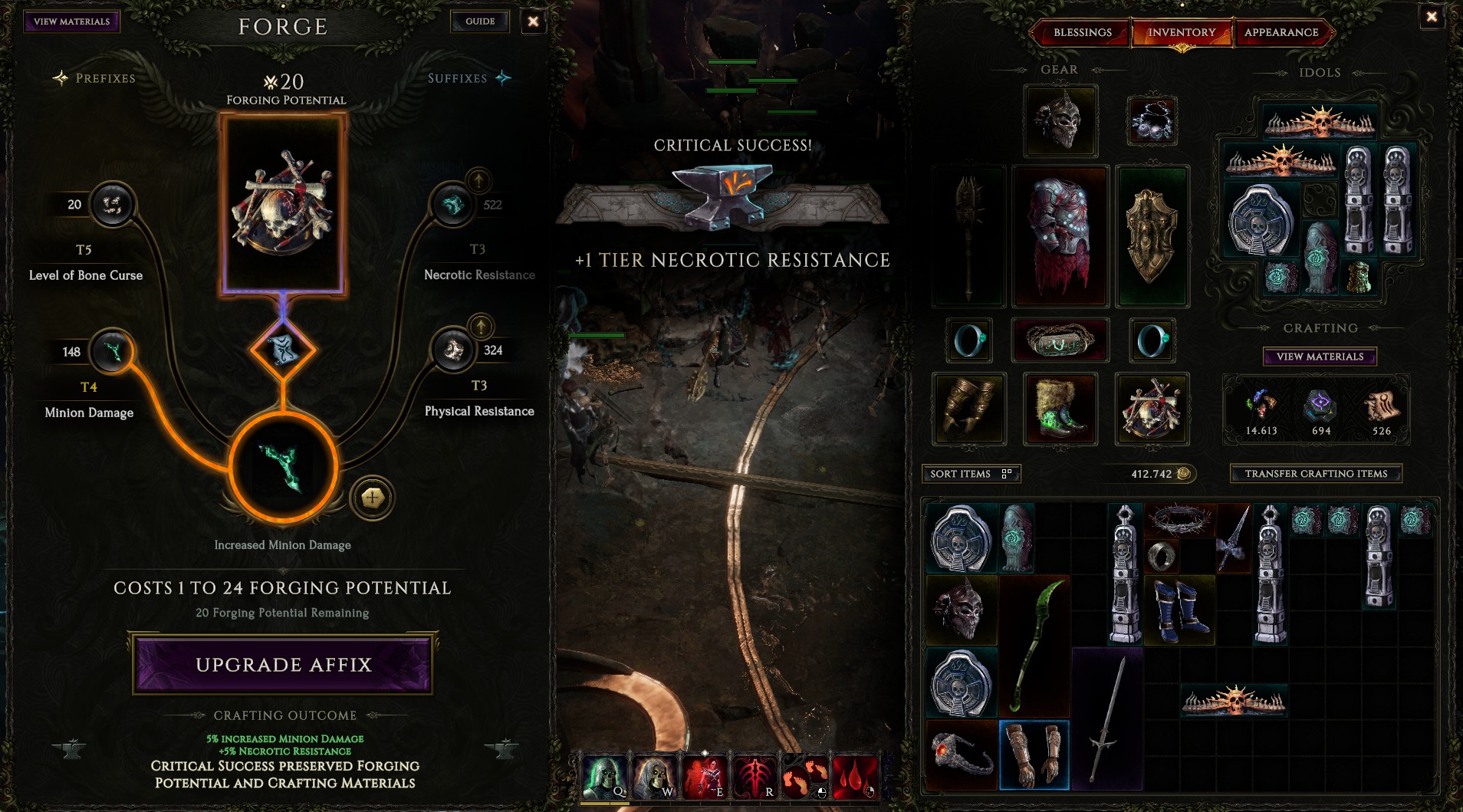
Crafting in Last Epoch is incredibly simple. It’s widely agreed that this is one of the most well-developed crafting systems in any ARPG. To start crafting with an item, all you have to do is bring up the forge screen with the F key. You can also go to the menu and select it from there. You can also interact with the forges scattered throughout the world, but most people just find it’s easier to press the F key.
Once you’re on this menu, plop in your favorite item, and the forge screen will populate with the crafting information for that specific item. Whether an affix sits on the left or right is determined by that specific affix being a prefix or a suffix. One item can only have four base modifiers, two on the left and two on the right. There are also sealed affixes that give an item the ability to have five modifiers.
The modifiers that go on the left and right are different than each other. Luckily, you don’t have to memorize where each modifier goes. If you find an item that has one of these four base slots missing, you’ll see the icon indicating that you can add an affix in that slot. Click on that icon, and it’ll bring up your affix inventory, giving you a list of the affixes that can be applied in that specific slot. This inventory is filled with all of the affix shards that you loot in the world. Affix shards represent one tier of an affix, and there are a lot of them.
Crafting an Item
Placing the white item in the forge brings up its empty modifier slots. This means that you can add whatever you want in those slots. However, there is one more main thing to remember when crafting your items. Each item has a set amount of what’s called forging potential. Forging potential is a number that represents how much more crafting this specific item can handle. If you have more than zero, you can keep making changes to the item. Once you reach zero forging potential, you can’t make any more changes. You can never outright destroy an item, but you can break one if you run out of forging potential without getting the specific stats you want. The Forging potential system prevents you from taking one item and performing unlimited crafts on it.
Each crafting attempt, anything you do to the item will take away some amount of forging potential. That amount is rolled within a range indicated on the forging screen. Higher tiers will have higher ranges, so typically you want to shoot for the best rolls within the highest tier. You can technically loot items that have tier six and seven affixes on them. Those are the pretty purple exalted items, but you can upgrade affixes past tier five through crafting. The next thing you want to look to do through crafting is upgrade the item’s current affixes. Any affixes can be upgraded to tier five through crafting as long as you have an affix shard for that specific affix. Higher tiers mean better stats. Here are all the steps to craft an item in Last Epoch Season 2.
- Press ‘F’ to open the Forge interface.
- Place the item you wish to craft on.
- Insert the desired Affix Shards into the appropriate slots.
- Place any Glyphs you wish to use.
- Click the craft button to apply the changes.
Shattering the Item
Shattering the item will strip the item of its parts, giving you a chance to get back the shards associated with the modifiers on the item. To shatter items, you need runes of shattering. This is another crafting resource that you loot from enemies, or you can buy these from in-town vendors.
Advanced Crafting
Now it’s time to get into the more advanced crafting mechanics and talk about runes, glyphs, and some of the more unique situations that you’ll run into. The crafting system is not deterministic, but you can heavily influence the outcome of your crafting attempts. The best example of that so far is by using the affixes that you want in open slots on an item. The last epoch goes another step further, giving you more ways to craft your items through the use of runes and glyphs.
There are eight runes in the game right now, with three more new ones. To keep this guide simple, I’m only going to cover in detail the ones that, in my experience, are going to be used the earliest and most often.
Rune of Shattering
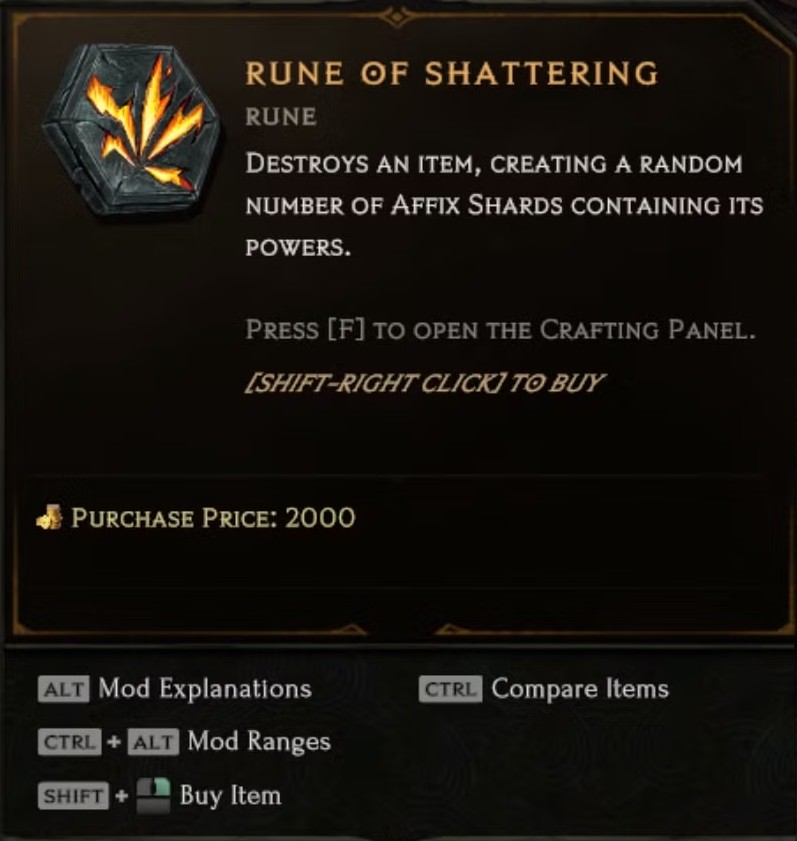
First up, the rune of shattering. You’re going to be using a lot of affix shards. Shards drop pretty regularly because some of them can be extremely rare. You’re going to want to be shattering your items, so that you can build up your crafting inventory with all the affixes you may need. This is a great habit to form because, for the most part, gold is much more common than specific affixes. Selling your items doesn’t make much sense when you can shatter the item for your affixes to fuel your future crafting.
To shatter an item, you need a rune of shattering. It does exactly what it sounds like. It shatters the item, destroying the base and giving you the affix shards in return. The affix shards you receive correspond to the affixes that were on the item when you shattered it. It’s not a guarantee that you’ll receive all of the affix shards from the item. The number of shards you get back from an item is randomly rolled when you click to shatter. So, there is a chance that your favorite stat on an item may not become an affix shard if you haven’t sacrificed enough goats to the RNG gods that harvest season.
Rune of Removal
Let’s say you don’t want to shatter an item completely, you like the item, and would potentially use it if it had better modifiers on it. The only way you can remove affixes from an item is by using the rune of removal. This rune will remove an affix from the item, but it’s random. So, if you have an item with four affixes on it, you’ll have a 25% chance to remove the specific affix that you want.
Rune of Ascendance
The third most powerful rune is the rune of ascendance, which converts any item with forging potential into a unique item of the same type. So, if you use the rune of ascendance on a sword, you’ll get a unique sword; use it on a ring to get a unique ring. These runes are pretty rare, but if you have them, you can use them to target farm a specific unique item. The runes of removal and shattering are the only two runes that I use often. So, I guarantee that you can get through most of the game without messing with any of the others. But if you feel like you want to get spicy, play around with the other runes and get a feel for how they work. They have a little bit more of a niche use, but if the situation arises, they are useful. G
Glyphs
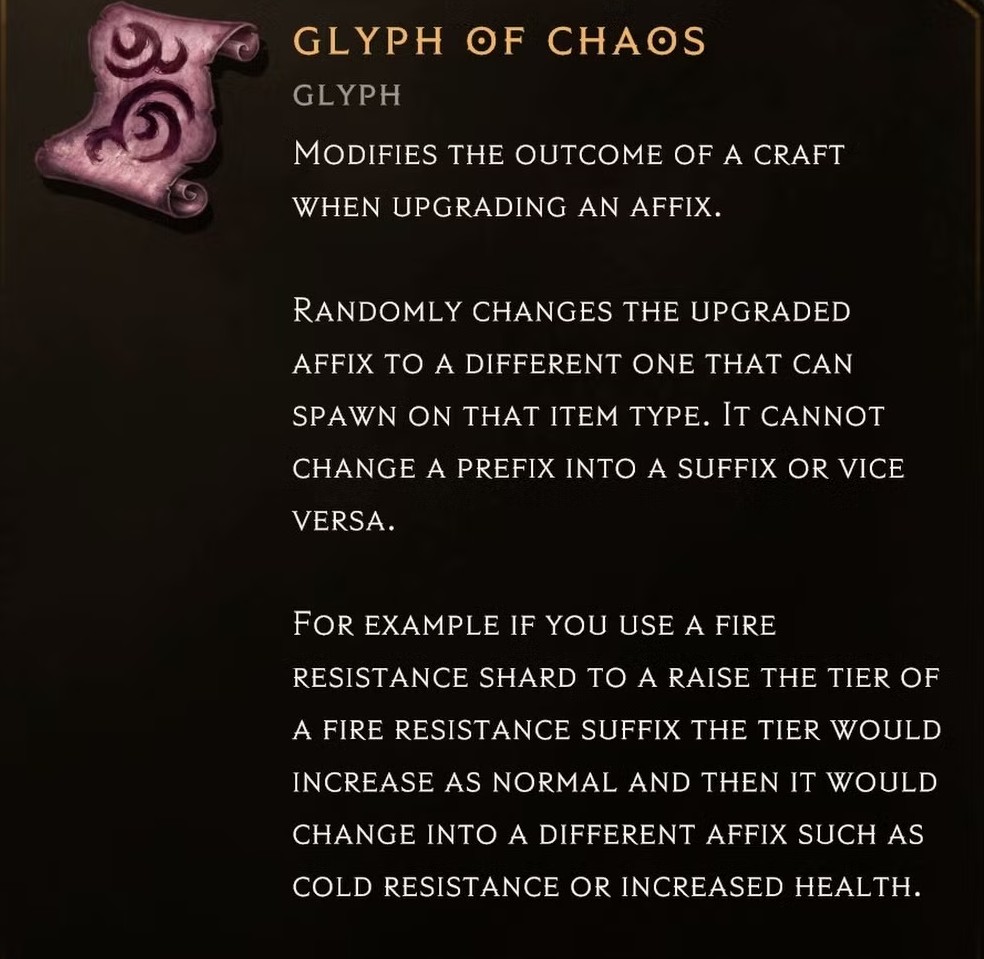
Glyphs are used way more often in Last Epoch Season 2. There are six different glyphs in the game right now that directly impact the crafting outcomes of rolling affixes. The best and most used glyph is the glyph of hope. You’re going to want to use using every single time you craft. They are super common as loot drops, so you should never feel like you’re wasting them too much. The glyph of hope gives you a 25% chance to preserve your forging potential when upgrading an affix.
The Glyph of Chaos
The glyph of chaos is the beautiful pinkish glyph here that gives you the ability to reroll an affix into something new. Even if it is gambling, it’s better to use the glyph of chaos to gamble on a bad affix than it is to use a rune of removal and gamble on completely deleting a good affix. Glyphs of chaos do have a couple of rules. The new affix has to be the same type of affix as the old one. So, a prefix will change to a prefix and a suffix to a suffix. The new affix will also only change to an affix that can be present on that type of item. So, as an example, if you’re crafting a sword, it’ll only change into sword affixes.
Glyph of Despair
This one is very important once you beat the campaign and start pumping into the endgame. The glyph of despair will give you a chance to seal an affix, having less chance the higher the tier of affix you’re trying to seal. If it fails, the affix will upgrade as normal, and you lose the glyph. However, if you’re successful, you seal an affix instead of upgrading it, making it the fifth modifier on the item. A sealed affix can’t be touched after it’s sealed, meaning it can’t be upgraded or rerolled. Whatever tier the affix was when it was sealed, that’s the tier it’ll stay at forever.
Once sealed, the affix moves to its sealed affix fifth slot. This opens up its original slot for another affix. You can put a new affix in there and continue to upgrade the item. One thing to note about glyphs of despair, the affix that you’re trying to seal has to be upgradable. This is that you can’t attempt to seal a tier five stat. The highest tier you can seal is tier four, which has a significantly lower chance of being sealed than a tier one stat. This is extremely powerful, but glyphs of despair are rare, so use them wisely.
Crafting Legendary Item
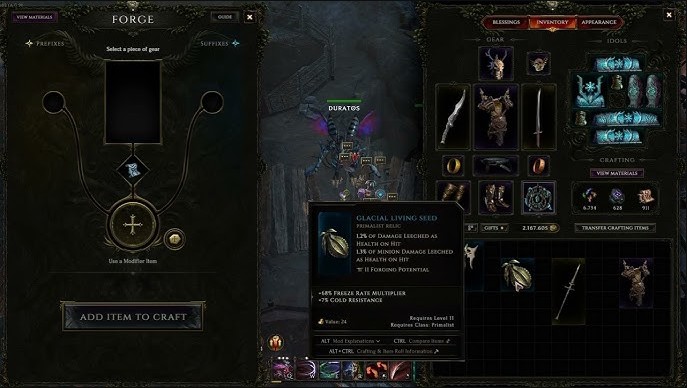
The game offers several different ways to craft a Legendary Item in Last Epoch. The primary and original method is to use a unique item with legendary potential and merge it with the same type of Exalted item. This process takes place specifically at the Eternity Cache structure, which players find within the Temporal Sanctum Dungeon. Another method to craft legendary items is to use the Nemesis System. It allows you to add the legendary potential or a legendary affix to a Unique Item. However, this method does not guarantee the legendary potential of a Unique Item. Moreover, it is only recommended for such Unique items with no legendary affixes that players want to turn into Legendaries.
Acquiring Exalted Items requires a different approach than Unique Items. A few of the Exalted Items that players can find are in the end areas of the campaign, especially the higher-level ones. For a better chance of Exalted Items, players have to progress deeper into the Timelines.
Upon gathering or farming Unique and Exalted Items, players must reach the Eternity Cache to start the process of crafting the legendary items. The Eternity Cache is a large Monolith structure that players find in the next room after defeating Julra (boss) in the Temporal Sanctum dungeon. In short, players must complete the Temporal Sanctum dungeon before they can start crafting the Legendary Items. Accessing the Temporal Sanctum dungeon requires the “Temporal Sanctum Key”. It has a low chance of dropping randomly by eliminating the monsters. However, the Timeline Bosses within the Monolith of Fate have a higher chance of dropping this key item. Once players have defeated Julra and completed the dungeon, they will be able to craft the Legendary Items by interacting with the Eternity Cache.
Tips and Tricks for Crafting in Last Epoch Season 2
Here are the best tips and tricks for crafting in Last Epoch Season 2.
- Use of Glyphs and Runes can help preserve FP and extend an item’s crafting lifespan.
- Affix Shards are used to modify an item’s stats. You can obtain them by using a Rune of Shattering on items with unwanted affixes.
- Glyphs are consumable items that influence the outcome of crafting actions.
- Using Glyphs of Stability can reduce this instability, making crafting more reliable.
- It’s often better to use a Rune of Removal on high-tier affixes to maximize shard yield.
- Upgrading a prefix will only yield effects from the prefix pool, and similarly for suffixes.
- Farm the boss-specific unique items by defeating the respective bosses.
- Clearing through the higher corruption will further increase the chances of finding a unique item with legendary potential.
- Complete the dungeons to have a chance of finding both unique items and exalted items.
- Reach at least Level 90 to start finding Exalted Items with Tier 6 and Tier 7 affixes.
FAQs About Crafting Guide in Last Epoch Season 2
What is crafting in Last Epoch Season 2?
Crafting in Last Epoch Season 2 allows players to increase and personalize their gear. This process is useful to optimize your character’s build and progress through the endgame content.
How to Craft Items in Last Epoch Season 2?
Press ‘F’ to open the Forge interface. Place the item you wish to craft on. Insert the desired Affix Shards into the appropriate slots. Place any Glyphs you wish to use. Click the craft button to apply the changes.
How to craft the Legendary items in Last Epoch?
Crafting a Legendary Item requires a Unique and an Exalted Item of the same type. It means, if you have a Unique Glove, you must get an Exalted Glove. Moreover, the Unique must have at least one Legendary Potential. After getting these components, complete the Temporal Sanctum Dungeon and interact with the Eternity Cache. Place the unique and exalted items into the respective slots, and then switch the era to find the legendary item.
Thank you for reading the article. We provide the latest news and create guides for new and old titles, including Death Stranding 2, Baldur’s Gate 3, Roblox, Destiny 2, and more.
 Reddit
Reddit
 Email
Email


